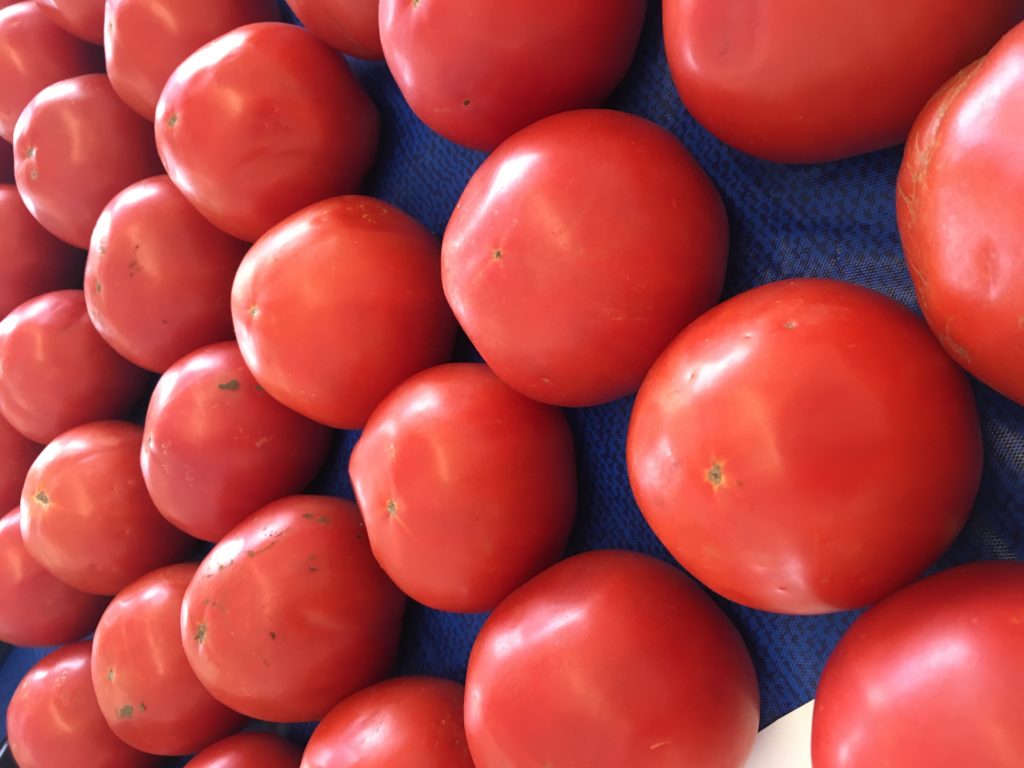Selecting Tomato Varieties for Your Garden
go.ncsu.edu/readext?787021
en Español / em Português
El inglés es el idioma de control de esta página. En la medida en que haya algún conflicto entre la traducción al inglés y la traducción, el inglés prevalece.
Al hacer clic en el enlace de traducción se activa un servicio de traducción gratuito para convertir la página al español. Al igual que con cualquier traducción por Internet, la conversión no es sensible al contexto y puede que no traduzca el texto en su significado original. NC State Extension no garantiza la exactitud del texto traducido. Por favor, tenga en cuenta que algunas aplicaciones y/o servicios pueden no funcionar como se espera cuando se traducen.
Português
Inglês é o idioma de controle desta página. Na medida que haja algum conflito entre o texto original em Inglês e a tradução, o Inglês prevalece.
Ao clicar no link de tradução, um serviço gratuito de tradução será ativado para converter a página para o Português. Como em qualquer tradução pela internet, a conversão não é sensivel ao contexto e pode não ocorrer a tradução para o significado orginal. O serviço de Extensão da Carolina do Norte (NC State Extension) não garante a exatidão do texto traduzido. Por favor, observe que algumas funções ou serviços podem não funcionar como esperado após a tradução.
English
English is the controlling language of this page. To the extent there is any conflict between the English text and the translation, English controls.
Clicking on the translation link activates a free translation service to convert the page to Spanish. As with any Internet translation, the conversion is not context-sensitive and may not translate the text to its original meaning. NC State Extension does not guarantee the accuracy of the translated text. Please note that some applications and/or services may not function as expected when translated.
Collapse ▲Many take great enjoyment in growing tomatoes in their home garden. There is something special about growing tomato plants and reaping the benefits of eating a fresh, home-grown tomato. Unfortunately, many home gardeners run into disease problems when growing tomatoes. Once a tomato plant shows symptoms of tomato problems like verticillium wilt, fusarium wilt, nematodes, and other diseases; there is not much that can be done. However, there are some things that you can do before you start growing tomatoes that will help reduce tomato diseases from occurring.
There are many tomato varieties out there to pick from. There is not one perfect variety of tomato for the home garden. Picking a variety to grow is based more on personal preference. Many home gardeners that have grown different varieties every year have learned what varieties provide the type and taste of tomato they prefer.

There is something special about growing tomatoes and reaping the benefits of eating a fresh, home-grown tomato.
Even though there are a lot of tomato varieties to select from, there are some things to think about and look for when selecting varieties. Selecting tomato varieties with disease resistance will help in reducing some disease problems that are often dealt with when growing tomatoes. Resistance to a disease does not necessarily mean that the variety will be completely immune, but a resistant variety will help at least reduce the severity of the disease.
Tomato varieties have abbreviations included on the plant label or variety description. Each letter or abbreviation represents what disease the variety is resistant to. Here is what the abbreviations of the most common diseases stand for:
V = Verticillium Wilt
F = Fusarium Wilt
N = Root-knot Nematode
TSWV = Tomato Spotted Wilt Virus
When selecting varieties, you would want to look for resistance to diseases that you have had problems with in the past. For example, if you had problems with tomatoes getting one of the wilt diseases, select varieties that have a V and/or F. If trying to remember what abbreviation goes with which tomato disease is too much trouble, at least remember that the more abbreviations or letters that are with a variety the better luck you will have in dealing with past disease problems.
Along with selecting disease resistant varieties, remember not to plant your tomato plants in the same spot that you did last year. If you encountered disease problems in the past years and continue to plant tomatoes in the same spot, diseases will build-up in the soil year after year which will only escalate the problems each year. If you have had a history of tomato disease problem in the area where you plant tomatoes and have nowhere else to plant the tomatoes, consider planting tomatoes in containers. Planting in containers will eliminate the risk of planting tomatoes in soils with soil-borne diseases.
Jessica Strickland is an Agriculture Extension Agent, specializing in horticulture for North Carolina Cooperative Extension in Wayne County.
Learn More!
- Sign up for the Wayne County Extension Gardening email list to receive timely gardening tips.
- Follow us on Facebook and Instagram.
- Visit the North Carolina Extension Gardener Plant Toolbox to discover more plant ideas for your garden.




